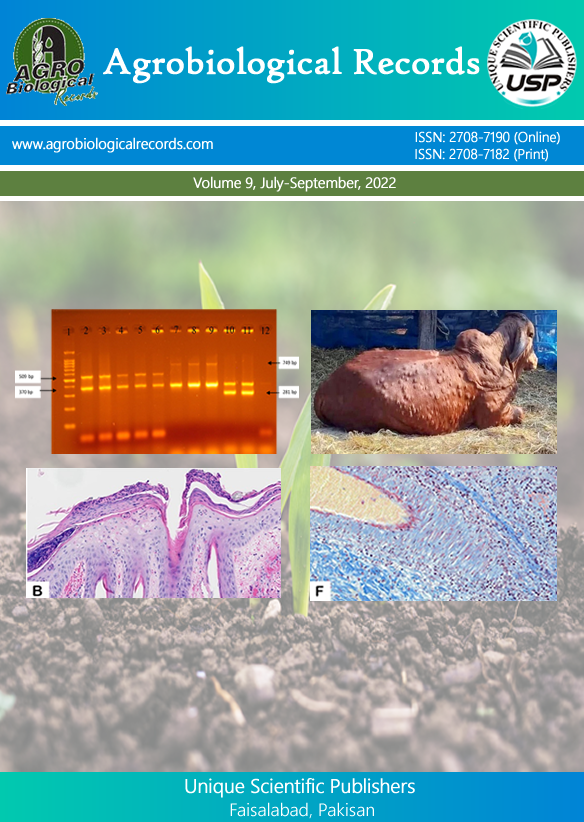
Asmaa Rabea1, Yassin Mahmoud Abdelraof1, Heba Mohamed El-khaiat1, Mohammed Abdelhameed Mohammed Kamal 2* and Mahmoud Atef Youssef Helal1*
1Department of Animal Medicine, Faculty of Veterinary Medicine, Banha University, Egypt 13511 2Department of Veterinary Hygiene and Management, Faculty of Veterinary Medicine, Cairo University, Egypt 12211
*Corresponding author: mohamed.a.kamal@cu.edu.eg (MAMK); mahmoud.halal@fvtm.bu.edu.eg (MAYH)
The study aimed to investigate the clinical patterns and blood profile dynamics in ewes across different reproductive stages. The research involved analyzing clinical patterns, hematological parameters, and various serum parameters from nonpregnancy to postpartum ewes, as well as mid-pregnancy ewes categorized by age (young vs. old) and litter size (single vs. twin). Analysis of serum minerals demonstrated notable changes in the levels of calcium, phosphorus, magnesium, copper, zinc, and selenium across the reproductive cycle. Calcium decreased significantly during late pregnancy (7.11±0.39mg/dL) and postpartum (9.69±0.06mg/dL), phosphorus remained consistent except for a decrease in late pregnancy (4.15±0.36mg/dL), and magnesium declined gradually from nonpregnancy to postpartum. Similarly, the examination of serum leptin, vitamin D, glucose, and triglycerides provided valuable insights into metabolic status and energy homeostasis. Leptin showed a significant increase during pregnancy (5.40±0.31, 5.80±0.06, 6.33±0.09ng/dL). The evaluation of hematological parameters revealed dynamic variations in RBC, Hb, HCT, WBC, lymphocyte, neutrophil, and MID levels throughout the reproductive stages. Additionally, the analysis of clinical patterns including body temperature, pulse rate, respiratory rate, and ruminal movement showed the adaptive changes occurring in response to pregnancy. Furthermore, comparisons between young vs. old age groups and single vs. twin lamb pregnancies indicated limited effects of age and litter size on the measured parameters. In conclusion, this research provides comprehensive insights that contribute to a better understanding of ewe health, reproductive performance, and metabolic adaptations, offering valuable information for effective management strategies, mineral supplementation, and overall care during different reproductive stages.